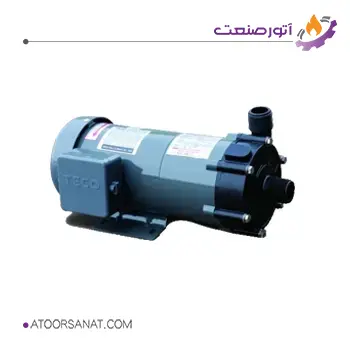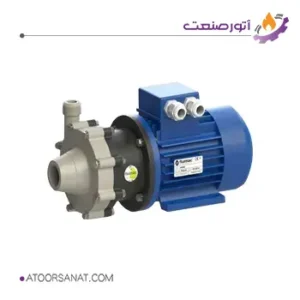Slurry Pump

What is a Slurry Pump?
Slurry pumps are used for the transfer and movement of fluids containing solid particles. These pumps are widely used in various industries such as power plant fossil fuel disposal, fertilizer production plants, land reclamation and development, dredging, and mineral transfer. Increasing public attention to the environment and energy consumption has expanded the application of slurry pumps.
A slurry is a mixture and combination of any type of fluid with solid particles. In 98% of industrial applications, water is considered the fluid. In other cases, chemical solutions such as alcohols, acids, and light oil are used. The solid in the fluid can be anything hard, coarse, rough, abrasive, and sticky. Slurries are generally non-Newtonian behavior (a non-Newtonian fluid is a fluid whose viscosity changes with the applied shear stress) and are divided into two categories based on the size of the solid particles:
- Unsaturated slurry: They are usually homogeneous and uniform mixtures and are made of fine and soft solids and often have little abrasive properties.
- Saturated slurry: They are made of course and rough solids that tend to create heterogeneous and non-uniform mixtures and have high abrasive properties.

Features:
- Country of origin: Australia
- Pressure range: 0.6 to 7.3 bar
- Housing material: Chrome and manganese

Features:
- Country of origin: Finland
- Pressure range: 1 to 6 bar
- Impeller material: Elastomer, hard metal
Slurry Characteristics
Regarding the characteristics of slurry, the following can be mentioned:
- Abrasion: This occurs when solid particles are under pressure and movement on the inner surface of the shell and the outer surface of the impeller. The rate of abrasion depends on the size and hardness of the solid particles and usually occurs between the impeller and the throat bushing or the rotating shaft and the stationary packing.
- Physical corrosion: A type of abrasion that occurs due to the collision of solid particles in the slurry with the pump components at different angles in three categories: sliding bed, low-angle impact, and high-angle impact in the shell and impeller.
- Chemical corrosion: This is a chemical reaction and occurs between the pump components and the slurry and leads to a change of the material’s properties. Corrosion occurs in all main classes of materials, including metals, ceramics, polymers, and composites, and leaves destructive effects. Chemical corrosion is classified based on the type of mechanism into chemical-physical, uniform, galvanic, stress, pitting, etc.
Types of Slurry Pumps
Slurry pumps can be divided into two main categories: centrifugal and positive displacement.
Centrifugal Slurry Pumps:
The centrifugal pump, the most common type of slurry pump, is a pump that uses a rotating impeller to increase the pressure of a fluid. The fluid enters the pump impeller along or near the rotating axis and is accelerated by the impeller and flows outward at high speed into a volute chamber, which converts the fluid velocity into pressure and directs it to the outlet. These pumps are classified based on the type and size of solid particles, application, and other characteristics.
Positive Displacement Slurry Pumps:
Another type of slurry pump is the positive displacement slurry pump:
- Peristaltic Slurry Pumps:
These pumps are in the category of positive displacement pumps. In these pumps, the fluid is confined within a flexible tube and is moved by a series of rollers driven by a rotor. As the rotor rotates, a portion of the flexible tube is closed under pressure, causing the fluid to be pumped and move through the tube. In addition, as the tube returns to its natural state, fluid flows into the pump. Peristaltic pumps are generally used for transferring sterile or corrosive fluids. Since only the inner surface of the tube is in contact with the pumped fluid, the inner surfaces of the pump can be easily cleaned and sterilized. Moreover, since there are no moving parts in contact with the fluid, peristaltic slurry pumps are inexpensive to produce and maintain.
- Diaphragm Pumps:
Diaphragm pumps belong to the family of positive displacement pumps. By reciprocating the piston on one side of the chamber, the diaphragm moves backward, causing a pressure drop and drawing the fluid into the chamber. On the other side, the diaphragm moves towards the pump casing, creating compression and resulting in a high-pressure fluid being directed towards the outlet. These pumps are used in various industries such as food, oil, gas, petrochemicals, ceramics, paint, etc. for pumping various acids, bases, liquefied gas, crude oil, edible and industrial oils, solvents, ceramic slurry, etc.

